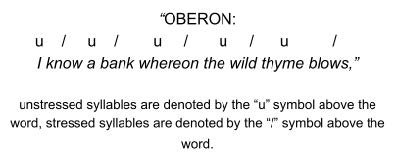During Shakespeare’s life and the reign of both Queen Elizabeth I and King James I of England (the VI of Scotland), Shakespeare would have been very acquainted with the political, social, and religious philosophies of his time. Most prominent in English history would be the bloody ideological conflict between Protestant and Catholic sects of English society. Protestantism was instituted by King Henry VIII when he divorced his Catholic wife from Spain, Catherine of Aragon, where King Henry formed his own Church of England which was governed by different (and transgressive) policies at the time. Over the years, King Edward VI, Queen Mary I, and Queen Elizabeth I all had different beliefs over which religion should be allowed in England (Edward VI favored Protestantism, Queen Mary favored Catholicism). Queen Elizabeth I decided Catholicism was tolerable and acceptable, though she still supported Protestantism as the prevailing sect of Christianity in her country. Of the Protestants, a strict sect of Christians called Puritans, believed that Queen Elizabeth had not done enough to rid the Catholic practices from the Church of England, and thought she favored Catholics because of her tolerance.
In addition to the tense religious situation of England, Elizabethans adhered to a strict hierarchy known as the “chain of being,” which was corrupted from its original philosophical meaning, which simply was a description of how divinity, and human, animal, plant, and mineral were all connected. In Elizabethan England, this became a structure for how society was oriented, with God being the highest, angels second, and Kings and Queens third – those who were not nobility were in the fourth category with varying degrees of closeness to God, with peasants being the lowest, just above animals, who were fi fth in this chain. As a rule of this chain, those placed in this “link” unable to move upwards, as it would disrupt the “natural order” of society, which largely prevented English peasants from large uprisings, as it was an aff ront to God himself, as the monarchy was the link closest to God. With the growth of a middle class in Elizabethan England that was more and more literate and educated (who also began to believe in secular beliefs of humanism and free will), this “great chain” that cemented monarchy at the highest of the hierarchy was being challenged. For Shakespeare, he has referenced the chain of being and religion in a multitude of works – however A Midsummer Night’s Dream riff s on the theme of chaos and disorder against a pre-determined structure. For Hermia, she disobeys the Duke, and her own father (in this chain, the father was the head of any family), making her plight rather transgressive. In addition, nature’s representatives, Titania and Oberon, disrupt nature itself. Here, Shakespeare invites us to question our connection to authority.
Works Referenced
McEvoy, Sean. “Chapter 1: Shakespeare’s Language (1).” Shakespeare: The Basics, Taylor & Francis Ltd / Books, 2000, pp. 11–35. EBSCOhost.
